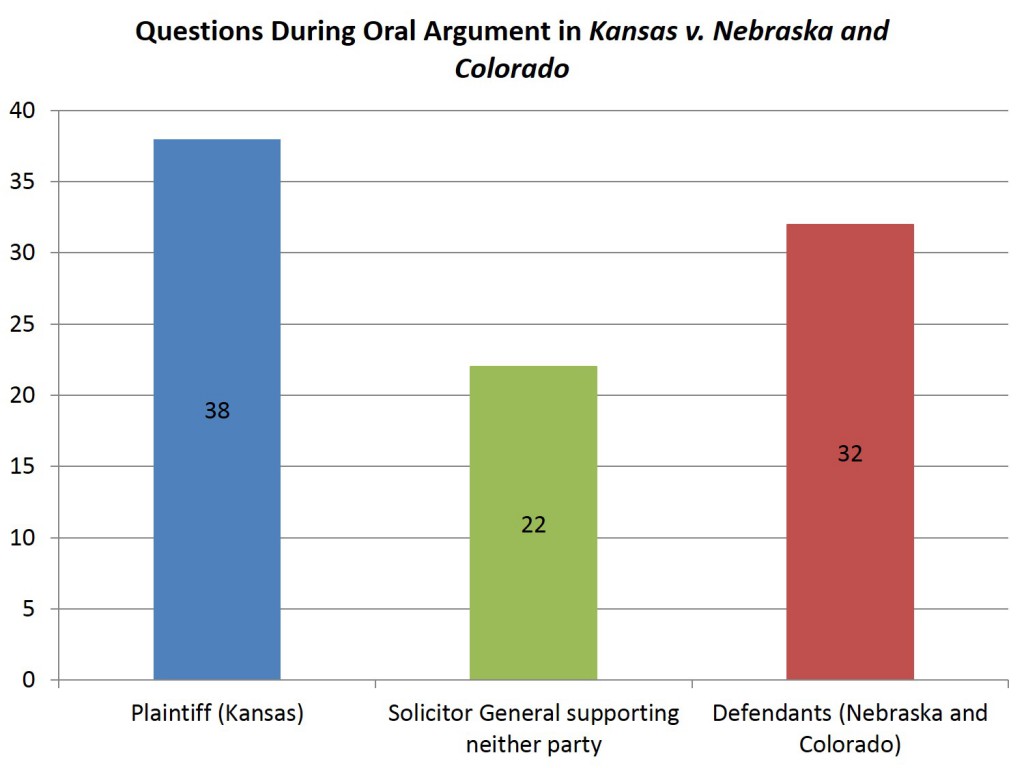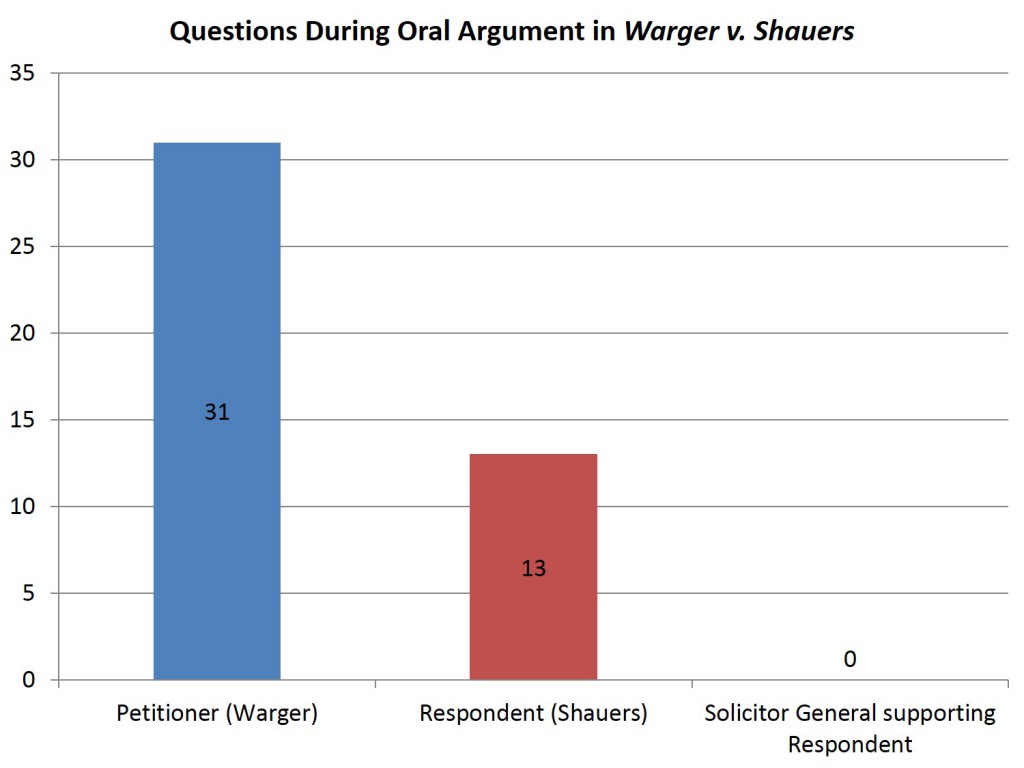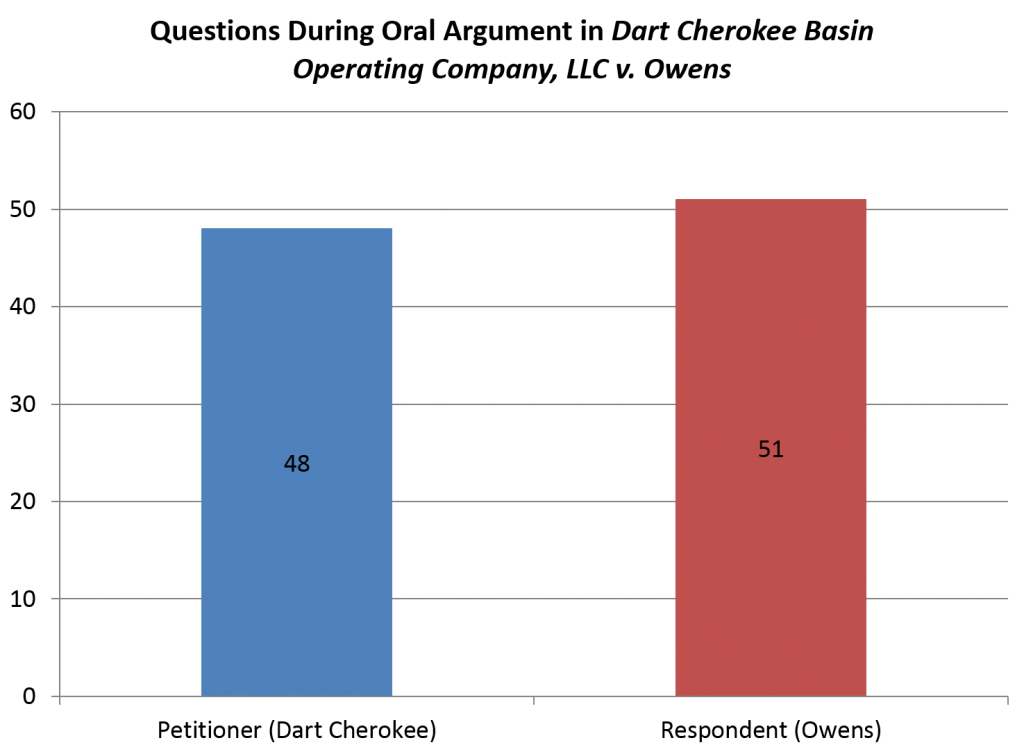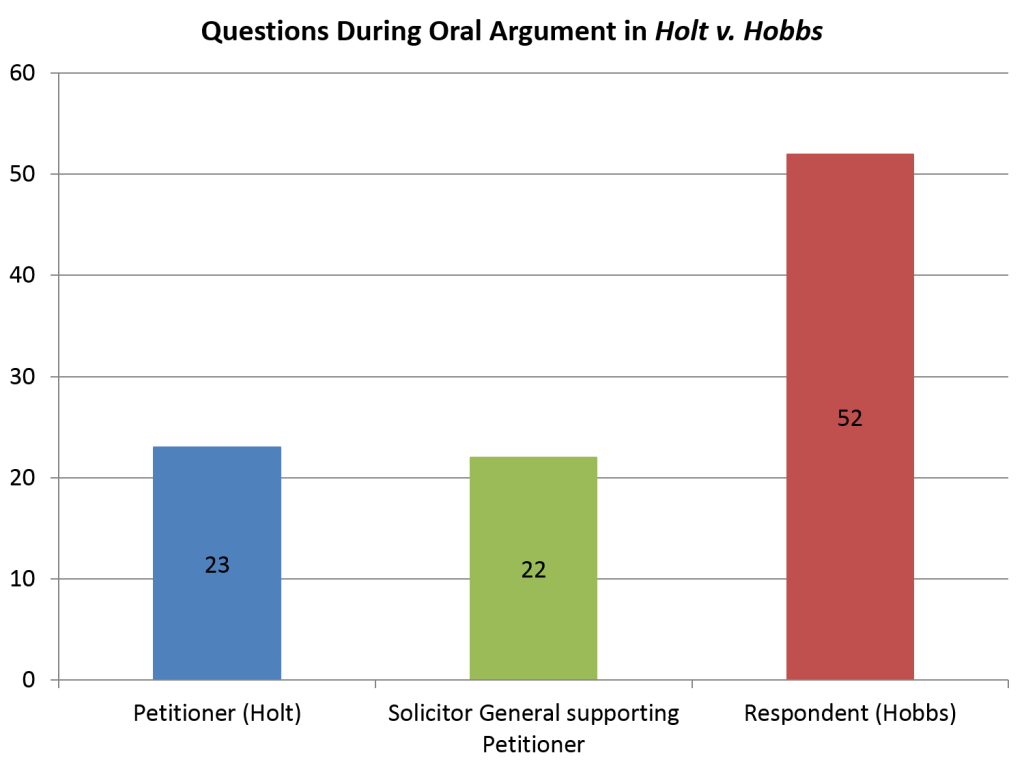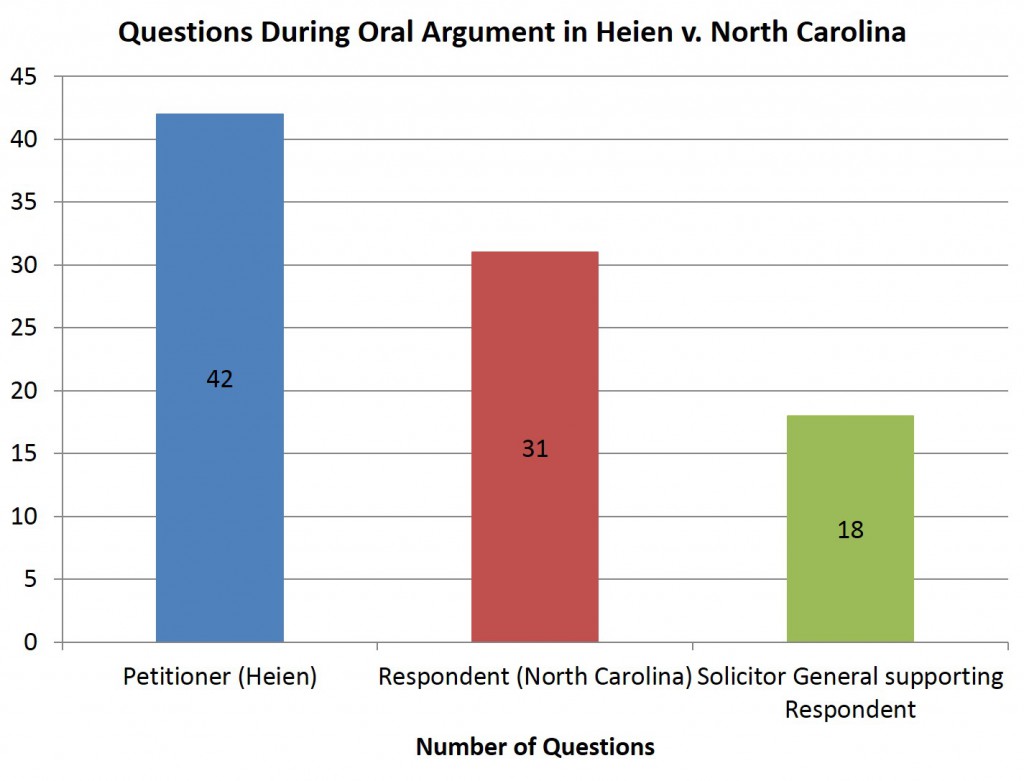The Supreme Court heard oral argument in two cases on Wednesday. I’m predicting the winners of the Supreme Court cases based on the number of questions asked during oral argument. Studies have shown that the advocate who receives more questions during oral argument is more likely to lose. For more about this method, see my post on last Term’s Aereo case.
Teva Pharmaceuticals USA, Inc. v. Sandoz, Inc. asks whether a district court’s factual finding in support of its construction of a patent claim term may be reviewed de novo, as the Federal Circuit requires, or only for clear error, as Federal Rule of Civil Procedure 52(a) requires.
The Petitioner Teva argued that Federal Rule of Civil Procedure 52(a) applies and the Federal Circuit must apply a deferential clear error standard of review to the district court’s findings of facts that underlie its claim construction of the patent. The Respondent Sandoz argued that de novo review applied because of the Supreme Court’s Markman decision. The Solicitor General, supporting neither party, argued that Rule 52(a) applies to any subsidiary factual findings related to claim construction, such as to the underlying science related to the invention. But the SG also argued that applying the clear-error standard would not likely alter the Federal Circuit’s conclusion that the patent was indefinite and that, ultimately, the Supreme Court should remand the case back to the Federal Circuit to consider the correct standard. In a footnote in its brief, the SG even conceded its approach might make any later ruling on remand irrelevant if it occurs after Teva’s patent expiration in September 2015.
My prediction is that the Supreme Court will reverse the Federal Circuit decision insofar as it failed to apply a clear error standard under Rule 52(a) to any factual findings related to the claim construction below. The Respondent Sandoz received 40 questions, 7 more than the Petitioner Teva. The differential suggests a win for Teva, at least in some respect.
The SG’s more nuanced position makes it more difficult to predict the entirety of the Supreme Court’s ruling. The SG, which received 12 questions in 10 minutes, agreed that Rule 52(a) should apply to subsidiary factual findings, but had a much different take on the merits of Teva’s patent and how the case should proceed on remand. In past cases, the Supreme Court has tended to side with the SG’s positions. In this case, though, I think the Court is unlikely to find appealing the possibility of a remand that could be mooted by the expiration of Teva’s patent. So, looking beyond simply the number of questions during oral argument, I predict that the Supreme Court will resolve the case and issue of the definiteness of the patent applying Rule 52(a) to the district court’s factual findings, instead of remanding that determination for the Federal Court. Whether or not the Supreme Court will find Teva’s patent claim definite is harder to predict. All I can say is that it should help Teva’s side, at least modestly, to have a Rule 52(a) standard of review.
Figure 1.
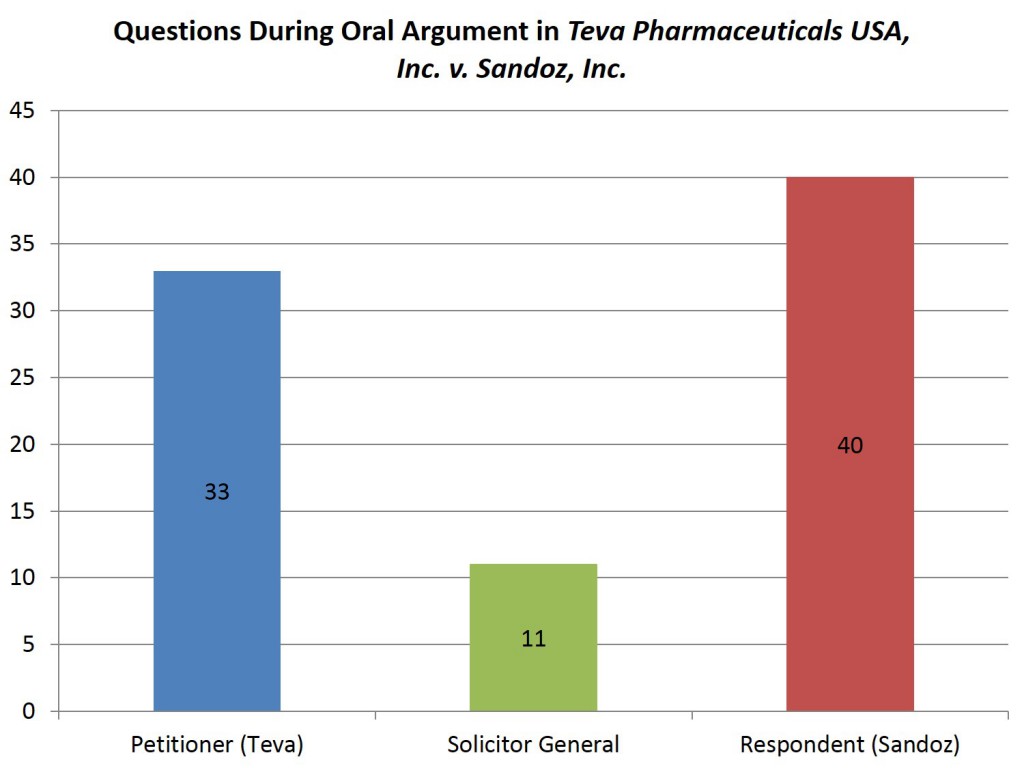
The second case, Jennings v. Stephens, asks whether the Fifth Circuit erred in holding that a federal habeas petitioner who prevailed in the district court on an ineffective assistance of counsel claim must file a separate notice of appeal and motion for a certificate of appealability to raise an allegation of deficient performance that the district court rejected, even though the Fifth Circuit acquired jurisdiction over the entire claim as a result of the respondent’s appeal.
My prediction is that the Court will side with the Respondent Stephens’ position (i.e., that the Fifth Circuit correctly decided the case). This case is easier to predict. The Petitioner Jennings received 14 more questions than the Respondent Stephens, which is a fairly large differential in questioning that suggests a win for Stephens (the Director of the Texas Department of Criminal Justice, Correctional Institutions Division).
Figure 2.

UPDATE on October 20: Individual Justice Analysis Suggests Close Call
I had a chance to go back over the question count per Justice. This examination paints a different picture of the possible winner than my earlier analysis of the total question count during oral argument. In contrast to using the Court’s total question count as a predictor, the question count by individual Justice leans slightly in favor of the Respondent Sandoz.
Five of the Justices (Roberts, Kennedy, Ginsburg, Alito, and Sotomayor) asked the Respondent fewer questions than the Petitioner—which suggests a more favorable outcome for the Respondent. It should be noted, however, the differential was not large. For four of these Justices (Roberts, Kennedy, Alito, and Sotomayor), the question differential was only one or two questions. Justice Kennedy, whose vote in past studies was harder to predict based on question counts, asked the Petitioner Teva just one more question than the Respondent (4 to 3). Justice Ginsburg was the only Justice who asked the Petitioner twice as many questions (6 to 3).
By contrast, three of the Justices (Scalia, Breyer, and Kagan) asked the Petitioner fewer questions by large margins. Indeed, Justices Scalia and Kagan asked the Respondent twice as many questions than the Petitioner (6 to 3, and 7 to 3 questions), while Justice Breyer asked more than three times as many questions to Respondent (14 to 4). (Justice Thomas did not ask any questions.)
So has this analysis changed my original prediction? To some extent, yes. I am less confident in the prediction, given the individual Justice breakdown. However, given the Solicitor General’s position in the case and the total question count plus three Justices with larger question differentials in favor of the Petitioner, I am going to stick by my original prediction that the Supreme Court will reverse the Federal Circuit decision for failing to apply a clear error standard under Rule 52(a) to any factual findings related to the claim construction below.



